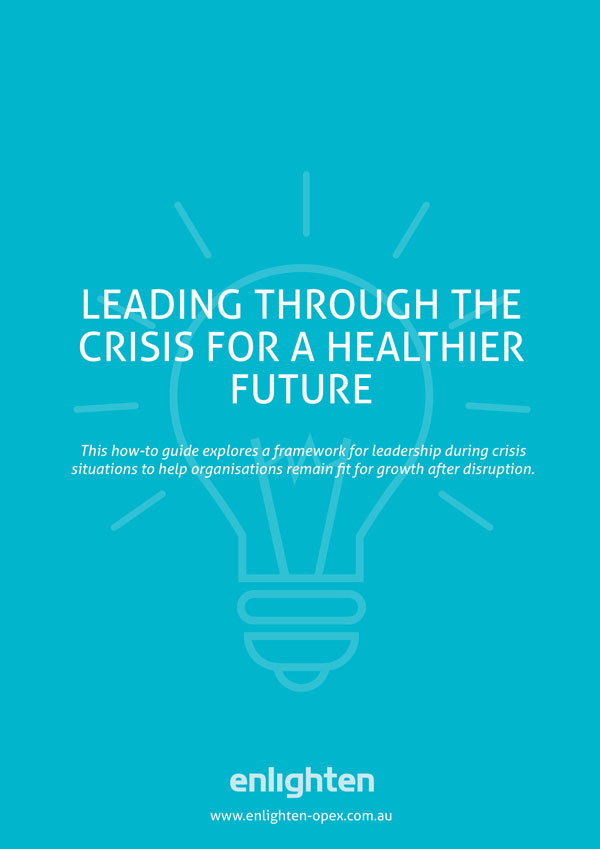Having been an integral part of the Enlighten team since 2021, he has helped a number of clients uncover barriers to greater productivity, utilise data to collaborate effectively and overcome their biggest business challenges.
As artificial intelligence and automation continue to power productivity and communication tools of the future, Kaushik says that advancements in technology will force organisations to fundamentally rethink the meaning of competitive advantage. Kaushik believes that challenges and opportunities are two sides of the same coin and encourages business leaders to embrace change, and do so quickly, if they are to stay competitive in a rapidly evolving business landscape.
Tell us a little bit about your role at Enlighten. What has your career journey been like to date?
I have had the opportunity to work in various roles within the financial services industry over the course of my career. Before Enlighten, I primarily worked on the operations side of non-banking financial companies in India, providing retail loans and managing loan recovery processes. It was here that I gained valuable insight into the financial services sector.
Since joining Enlighten in 2021, I have been an integral part of the delivery team, specifically as a Change Manager. I oversee the implementation of the Enlighten tool for clients, which involves onboarding teams onto the tool, familiarising them with its functionalities, and guiding them on best practices, such as reviewing metrics, conducting regular meetings, and developing action plans based on data trends. I have successfully completed two full implementations for our client, Northern Trust, spanning a 24-week period.
I’m also responsible for the optimisation and remediation projects post-implementation. These projects involve evaluating how teams are utilising the tool and identifying areas for improvement. I have led these projects for Northern Trust and State Street Bank, ensuring that financial services companies make the most of Enlighten methodologies.
My role allows me to contribute to both the implementation of the Enlighten tool and its ongoing evolution for which I am quite grateful.
What are some challenges you have encountered in your career and how have you overcome them?
Resistance to change when implementing new processes or tools, on the part of clients, continues to be an ongoing challenge. When we identify areas of improvement as part of an implementation by closely observing how teams work, our recommendations are occasionally met with hesitation and reluctance from managers who may be quite attached to their current processes.
To overcome this, I find positioning the proposed changes in a way that highlights the benefits for the individual on the other end of the table quite helpful. I emphasise how adopting these changes will lead to them receiving the recognition and credit for their team’s success. Framing recommendations as opportunities for growth and improved team performance makes it a lot easier to shift the perspective and encourage acceptance of suggested changes. This also applies to project roadblocks stemming from regulatory and compliance requirements especially when working with clients in the financial services industry.
Digging into the toolbox of communication skills is key to overcoming resistance to change and driving positive, mutually beneficial outcomes.
What are some highlights you can see users experience with Enlighten?
One of the highlights of the user experience with Enlighten is the opportunity for managers to gain insight into the often overlooked back-office functions of their organisations. While many companies primarily focus on the front-office and sales aspects, Enlighten shines a light on back-office processes, which are crucial for smooth operations. By providing managers with a wealth of data points that they wouldn’t find elsewhere, Enlighten enables them to see their teams’ activities in detail and evaluate efficiency more objectively.
The user experience begins with two distinct phases: the construct phase and the change phase. In the former, processes and activities are meticulously analysed to ‘construct’ a comprehensive view of team members’ performance. Then, in the change phase that follows, these metrics and the accompanying recommendations are presented back to managers who are often wowed by the abundance of information before them.
The ability to uncover hidden issues within teams is one of the biggest benefits for Enlighten users. Identifying areas of friction that reduce efficiency, known as ‘waste’, allows managers to view obstacles and inefficiencies differently and take action to overcome them a lot faster.
Enlighten supports businesses to celebrate daily successes and uncover the barriers that prevent people from getting their work done. What are some examples you have seen in this respect?
A simple but effective example is the implementation of a daily ‘Turbo’ meeting. This meeting, which lasts for 15 minutes, allows teams to review the previous day’s data and identify individuals who have performed exceptionally well. The managers recognise and acknowledge their contributions in a positive manner, boosting team morale and creating a culture of appreciation. This regular appreciation becomes an integral part of the team’s daily process, fostering a sense of happiness and satisfaction among team members.
I touched on what pinpointing ‘waste’ can do for overall efficiency, but a real world example of this relates to peer assistance at one of our client organisations. It was discovered that new joinees constantly seeking guidance from more experienced colleagues in their team was a top cause of inefficiency. Establishing standard operating procedures (SOPs) which were stored centrally for easy access was a simple and effective solution, which greatly reduced the time spent assisting peers.
The impact of peer assistance wasn’t just limited to teams, as some workers were also having to assist members from different teams and functions. This realisation led to managers taking proactive steps to collaborate with other team managers to support teams through organised training sessions, further reducing the time spent of ad-hoc instances of peer assistance.
These are just two examples to illustrate how Enlighten enables businesses to celebrate daily successes and address barriers by promoting a culture of recognition, identifying wastes, and implementing targeted solutions. By leveraging data and fostering collaboration, Enlighten empowers teams to enhance productivity and deliverables while minimising distractions and inefficiencies.
What do you think the future holds for leaders as businesses continue to change rapidly?
The future, with all the disruption we’re yet to see, holds both challenges and opportunities for business leaders. With the rise of artificial intelligence and intelligent chatbots, concerns about the displacement of human workers have become prevalent, especially as automated tools result in far greater efficiency and accuracy compared to human input. However, it is important to consider that what we see as progress today was once nothing but disruption.
I’ve witnessed first-hand what OCR (optical character recognition) has done for efficiency and accuracy of the loan application process, and have also seen how robotic process automation has revolutionised the loan booking process. Automation has the great ability to work tirelessly 24 hours a day and connect various phases of a process by seamlessly eliminating logjams, reducing errors and speeding up processes. It will impact the workforce in that some roles may become redundant, but a large workforce is no longer a marker of success.
Leaders must seek out innovation to ensure adaptability, operational efficiency and a competitive advantage. Technology holds the key to reducing costs, remaining agile, and being responsive to customer demands in a rapidly evolving business landscape. Failure to do so will result in a decline in market position and loss of customers to more tech-savvy competitors.
You were a recent winner of the Enlighten BOBS award, a peer-nominated award for Enlighten team members who exemplify the BOBS code: Be respectful and humble, One team, Bring positive energy, Step up. As a leader in your industry, you understand the importance of process improvements through automation. Can you share an example of how you have successfully implemented automation to streamline operations and drive efficiency in your organisation? Additionally, how do you foster a team player mentality, maintain positive energy, and ensure effective collaboration with both clients and Enlighten staff?
It is critical for leaders to understand the value of process improvements through automation. One example of successfully streamlining a process involved rethinking how we set time standards for certain activities. Previously, this involved observing tasks manually, which was time-consuming and subjective. Rethinking our approach led us to discover that the data captured in our bank system’s audit log provided an objective basis for setting these standards. We analysed the system reports and identified the time taken for multiple instances of an activity to set new standards based on the top quartile to ensure much greater efficiency and accuracy.
As for fostering team spirit and maintaining positive energy, leaders have to lead by example. My leadership style emphasises collaboration and collective responsibility, which are part of the culture here at Enlighten. As a result, my team understands that they are each accountable for delivering results to clients. For instance, if a tech lead is unavailable, another team member will take ownership to ensure that the client’s needs are met promptly and effectively. We strive to present a unified front to our clients to provide them a seamless experience.
Lastly, when collaborating with clients, I always see things from their perspective and aim to create win-win situations by building strong relationships based on regular two-way communication and cooperation. I believe in taking a consultative approach rather than adopting a consultant-centric stance. Instead of just imposing our action plan on clients, demonstrating the benefits of proposed actions leads to better collaboration and, ultimately, more successful outcomes.


